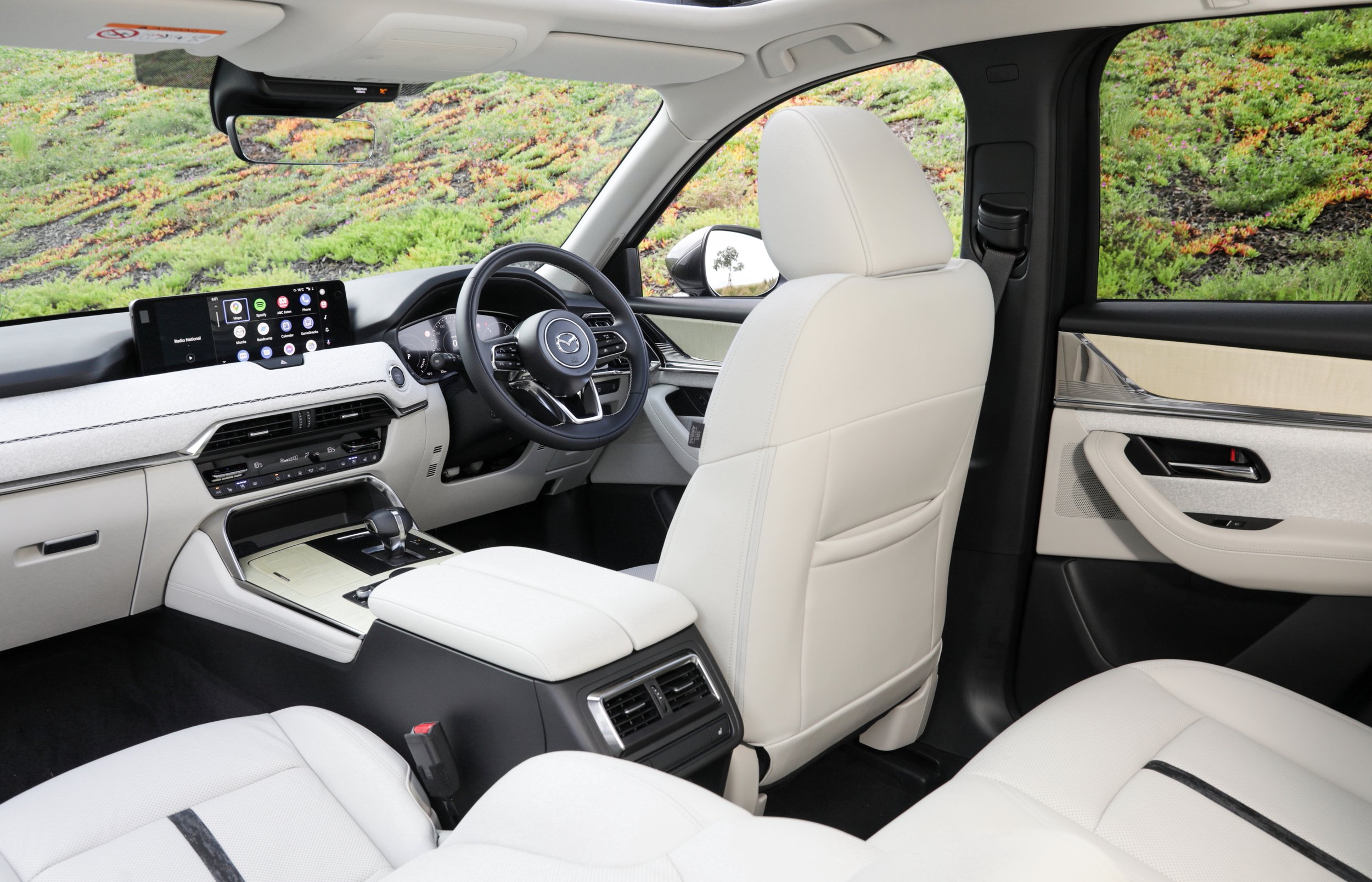Electric assist brings new Mazda six to the four
/Hiroshima has shared impressive economy and emissions data for the flagship petrol engine in an inbound additional sports utility.
FUEL economy and CO2 counts for the CX-60, a new large six-cylinder sports utility Mazda will have here later this year suggest it will be on par for economy and emissions with a long-serving Kiwi-favoured CX model that has a smaller capacity, less powerful four-cylinder.
Data shared by the brand indicates that, despite having two additional cylinders and almost a third more displacement and also generating virtually 50 percent more power and nearly double the torque of the naturally aspirated 2.5-litre petrol engine in the CX-5, the CX-60’s incoming 3.3-litre petrol returns commensurate fuel economy.
Mazda says the new model, whose release is expected to occur mid-year or slightly later, preceding the availability of another all new but larger SUV, the CX-90, will deliver 7.4 litres per 100km on the combined cycle while emitting 171 grams per kilometre of CO2.
The economy and the emissions figure – which are noted as being 10 percent lower than those from a turbo-petrol CX-5 (170kW/420Nm, 213g/km) – suggest the 48-volt mild-hybrid tech supporting the 3.3-litre, which Mazda dubs e-Skyactiv G (with the specific battery-fed part being called M-Hybrid), is lending positive contribution.
Mazda says it shows how effective ‘M Hybrid Boost’ is in supporting the engine during a light-load range “where internal combustion engines are typically not very efficient.”
It is not clear if the factory-cited figures come from it consuming 91 octane petrol, which it accepts, or a higher grade.
The electric motor in the CX-60 is positioned between the engine and transmission.
Mazda quotes peak power and torque figures for the 3.3-litre petrol CX-60 at 209kW and 450Nm, the latter offered from 2000-3500rpm.
The numbers result in a claimed 0-100kmh sprint time of 6.9 seconds, 0.8 seconds faster than the turbocharged CX-5 engine, which in New Zealand restricts to the $66,890 Takami flagship.
The three other CX-5 variants – GSX, Activ and Limited - run the naturally-aspirated 2.5, which makes 140kW and 252Nm and emits 191g/km.
Mazda is also making the CX-60 with a 3.3-litre turbo-diesel unit dubbed ‘e-Skyactiv-D’ developing 187kW and 550Nm including 48-volt MHEV assistance, which will return less than 5.0L/100km on the combined cycle. There’s no clarity, yet, about whether than engine will come here, given the so-so experience with CX-5 diesel.
Mazda NZ is more likely to prioritise the other CX-60 provision, with a 2.5-litre petrol four-cylinder with plug-in hybrid capabilities. That unit makes 241kW/500Nm and is claimed to use just 2.1L/100km fuel in optimal operability – meaning when electric and petrol are working as one.
Regardless of which powertrain is chosen, CX-60 runs as with a rear-biased all-wheel drive system, and seems set to provision in three specification grades, topping out with the traditional Takami.
The provision of Mazda SUVs with double-digit suffixes is going to make for a crowded showroom, as is there no indication any of the long-serving existing single-digit offerings are going to be bumped. At present, Mazda has the CX-3 and CX-30, CX-5, CX-8 and CX-9. Outside of that family, there’s also the MX-30, in full electric and hybrid – a different breed within the Mazda viewpoint yet nonetheless also considered a crossover, so really not that separated.
In addition to the CX-60 and CX-90, there’s conjecture it might also add the CX-70 and CX-80. These respectively are described as being a five-seat version of the CX-90 with a swooping roofline and slightly shorter body and a stretched seven-seat version of the CX-6.




















